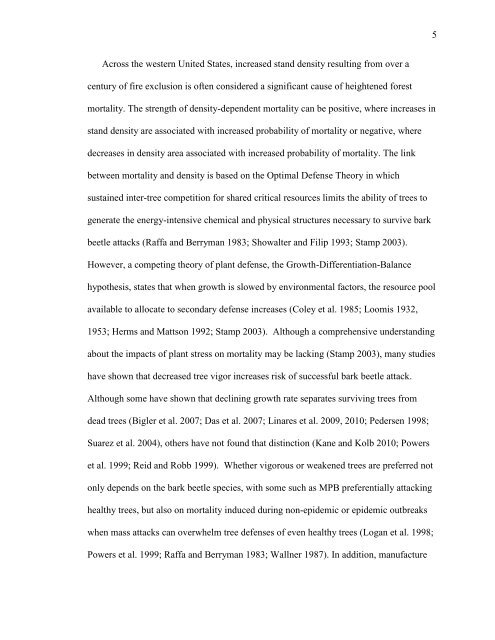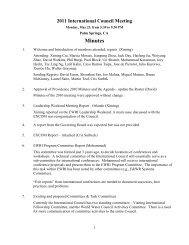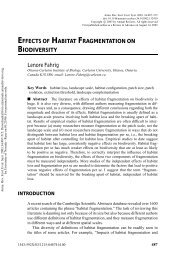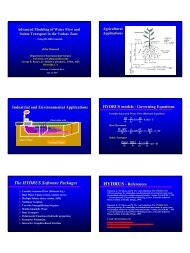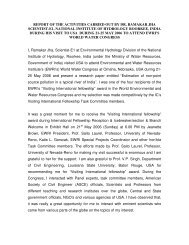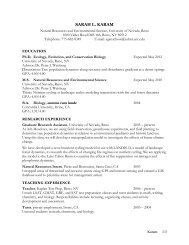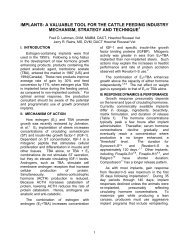Van Gunst, K.J. 2012. Forest Mortality in Lake Tahoe Basin from ...
Van Gunst, K.J. 2012. Forest Mortality in Lake Tahoe Basin from ...
Van Gunst, K.J. 2012. Forest Mortality in Lake Tahoe Basin from ...
- No tags were found...
You also want an ePaper? Increase the reach of your titles
YUMPU automatically turns print PDFs into web optimized ePapers that Google loves.
5Across the western United States, <strong>in</strong>creased stand density result<strong>in</strong>g <strong>from</strong> over acentury of fire exclusion is often considered a significant cause of heightened forestmortality. The strength of density-dependent mortality can be positive, where <strong>in</strong>creases <strong>in</strong>stand density are associated with <strong>in</strong>creased probability of mortality or negative, wheredecreases <strong>in</strong> density area associated with <strong>in</strong>creased probability of mortality. The l<strong>in</strong>kbetween mortality and density is based on the Optimal Defense Theory <strong>in</strong> whichsusta<strong>in</strong>ed <strong>in</strong>ter-tree competition for shared critical resources limits the ability of trees togenerate the energy-<strong>in</strong>tensive chemical and physical structures necessary to survive barkbeetle attacks (Raffa and Berryman 1983; Showalter and Filip 1993; Stamp 2003).However, a compet<strong>in</strong>g theory of plant defense, the Growth-Differentiation-Balancehypothesis, states that when growth is slowed by environmental factors, the resource poolavailable to allocate to secondary defense <strong>in</strong>creases (Coley et al. 1985; Loomis 1932,1953; Herms and Mattson 1992; Stamp 2003). Although a comprehensive understand<strong>in</strong>gabout the impacts of plant stress on mortality may be lack<strong>in</strong>g (Stamp 2003), many studieshave shown that decreased tree vigor <strong>in</strong>creases risk of successful bark beetle attack.Although some have shown that decl<strong>in</strong><strong>in</strong>g growth rate separates surviv<strong>in</strong>g trees <strong>from</strong>dead trees (Bigler et al. 2007; Das et al. 2007; L<strong>in</strong>ares et al. 2009, 2010; Pedersen 1998;Suarez et al. 2004), others have not found that dist<strong>in</strong>ction (Kane and Kolb 2010; Powerset al. 1999; Reid and Robb 1999). Whether vigorous or weakened trees are preferred notonly depends on the bark beetle species, with some such as MPB preferentially attack<strong>in</strong>ghealthy trees, but also on mortality <strong>in</strong>duced dur<strong>in</strong>g non-epidemic or epidemic outbreakswhen mass attacks can overwhelm tree defenses of even healthy trees (Logan et al. 1998;Powers et al. 1999; Raffa and Berryman 1983; Wallner 1987). In addition, manufacture


